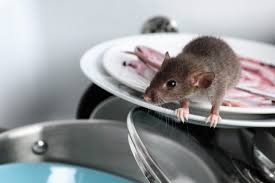Not all pests are created equal—and neither are the treatments designed to eliminate them. When it comes to effective pest control, insect-specific treatments offer a smart and strategic approach that goes beyond generic solutions. These treatments are carefully crafted to address the behavior, biology, and habitat of each insect species, delivering targeted results that ensure long-term relief.
Why Insect-Specific Treatments Matter
General pest control can provide a blanket of protection, but specific insects require specific strategies. Ants trail in colonies, bed bugs hide in crevices, mosquitoes breed in standing water, and cockroaches thrive in damp, dark areas. Using a one-size-fits-all solution rarely provides effective or lasting results.
Insect-specific treatments offer:
- Higher efficacy
- Reduced pesticide use
- Minimized environmental impact
- Long-term prevention
By identifying the insect species and understanding its lifecycle, professional exterminators can create tailored treatments that eliminate the pest completely.
Common Insects and Their Unique Treatments
Each type of insect has its own quirks. Here’s a breakdown of common household pests and how insect-specific treatments are designed for them:
1. Ants
Ant treatments focus on destroying the entire colony, not just the visible workers. Bait stations are commonly used so ants carry the poison back to the queen, disrupting reproduction and wiping out the nest.
2. Cockroaches
These resilient pests require a multi-layered approach, including gel baits, residual sprays, and growth regulators. Specific treatment plans are often adjusted based on whether you’re dealing with German cockroaches, American cockroaches, or other species.
3. Bed Bugs
Bed bugs are notoriously difficult to eliminate. Treatments include high-heat solutions, targeted insecticide sprays, and encasements for mattresses. Follow-up visits are essential to ensure total eradication.
4. Termites
Subterranean termites require soil treatments, while drywood termites are treated with localized or whole-structure fumigation. Termite treatments often include bait stations and barrier systems to prevent future infestations.
5. Mosquitoes
Control focuses on breeding site elimination, larvicide application, and barrier treatments. Insect-specific products target mosquitoes without harming pollinators like bees.
6. Fleas and Ticks
Treatments for fleas and ticks often involve both indoor and outdoor applications. Pet-safe sprays, yard treatments, and vacuuming routines work together to break the lifecycle.
Professional vs. DIY Approaches
Store-bought sprays and foggers rarely address the root of an infestation. Professionally administered, insect-specific treatments use scientific identification and precise application techniques that DIY solutions can’t match. Professionals also ensure treatments are safe for children, pets, and the environment.
Preventive Measures Enhance Results
After applying insect-specific treatments, prevention is key. This may include:
- Sealing cracks and gaps
- Eliminating food and water sources
- Reducing clutter
- Regular inspections and monitoring
Integrated Pest Management (IPM) combines these strategies with precise treatment for long-lasting success.
Conclusion
When dealing with insects, specificity equals success. Insect-specific treatments offer a focused, effective, and environmentally mindful approach to pest control. By targeting each species based on its unique characteristics, these treatments ensure quicker results, fewer chemical applications, and a pest-free home or business. Don’t rely on guesswork—choose treatments that are as smart and strategic as the pests are persistent.







